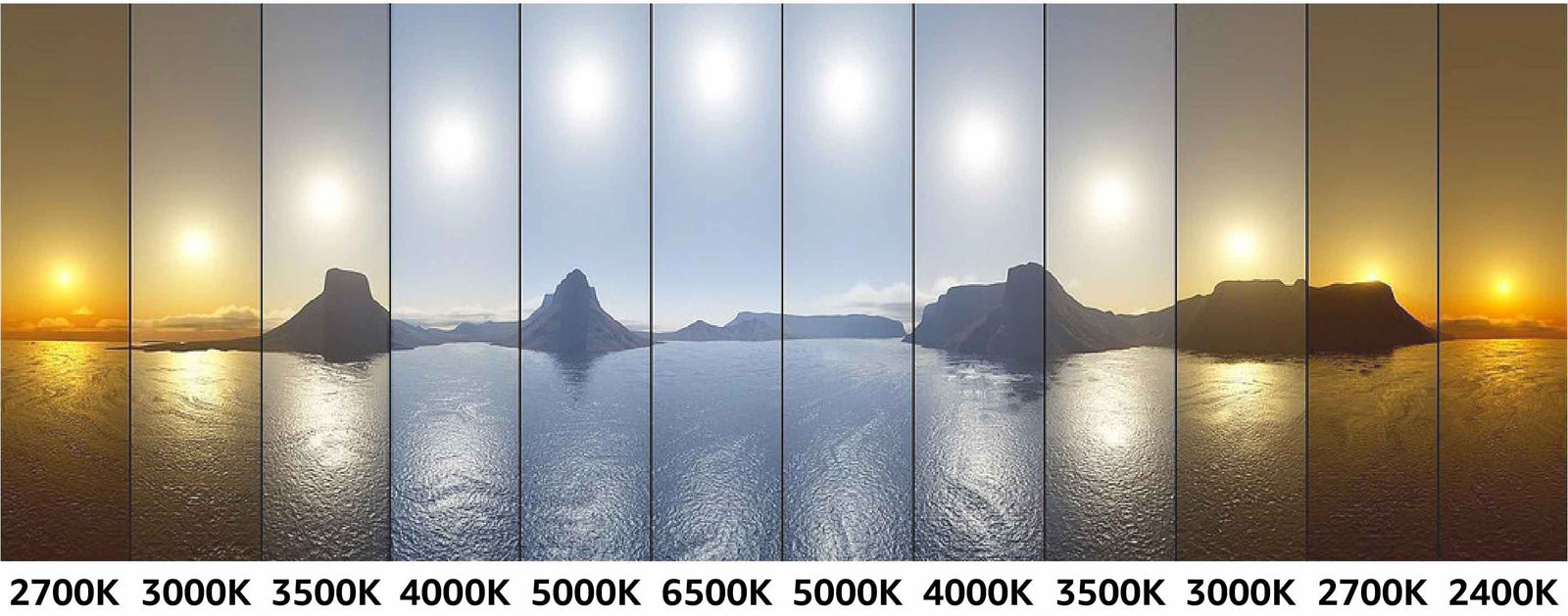

What is light?
The sun produces electromagnetic radiation which we know as radio waves, X-rays, UV rays, visible light etc. The only radiation humans have evolved to see is in the visible light spectrum. Everything we see around us is a reflection of this visible radiation.
Light created by the sun has a full spectrum of visible and invisible radiation. UltraViolet (100nm - 400nm) and Infrared (700nm - 1mm) radiation are both undesirable in light used for human vision because it can be harmful to your health as well as a waste of energy.
The visible "white" light (400nm - 700nm) we are used to from the sun is created by the combination of wavelengths in the red, green and blue light spectrum. The strength of each wavelength determines the colour temperature. Analysing light with a Spectrometer gives us a visual representation of this distribution.
Visible sunlight is considered white light, but it varies throughout the day. For example, at sunset the dominant wavelengths are in the red spectrum, so anything illuminated by the sun appears warmer (red/orange) and creates a relaxing mood. Midday light has a more balanced spectrum, resulting in a cooler, more stimulating atmosphere. Analysing the spectrum of different light sources helps us to visually understand the differences and why some light just doesn't seem natural to us.
Sunlight Spectrum
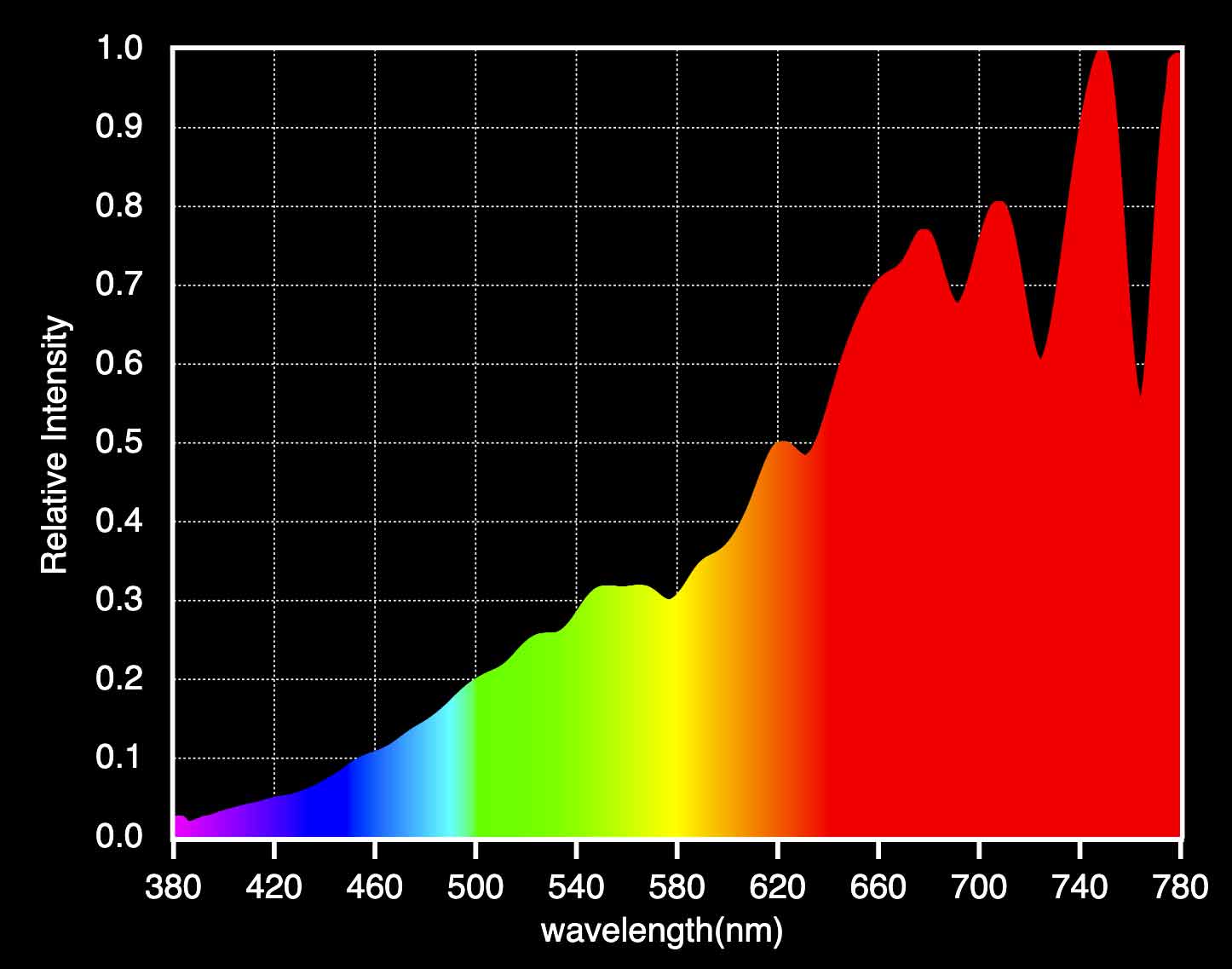
2800K - Sunset
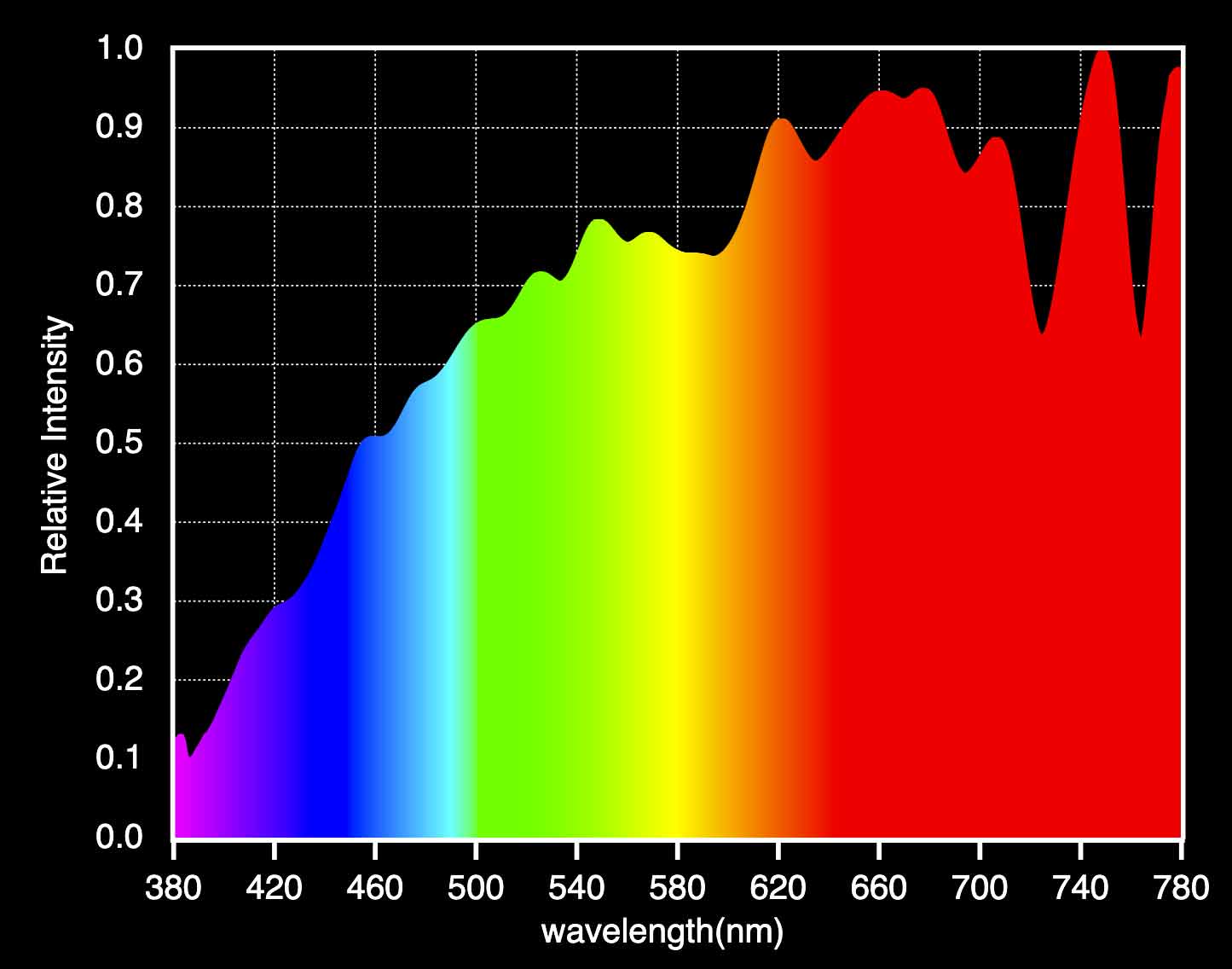
4000K - After sunrise / Before sunset
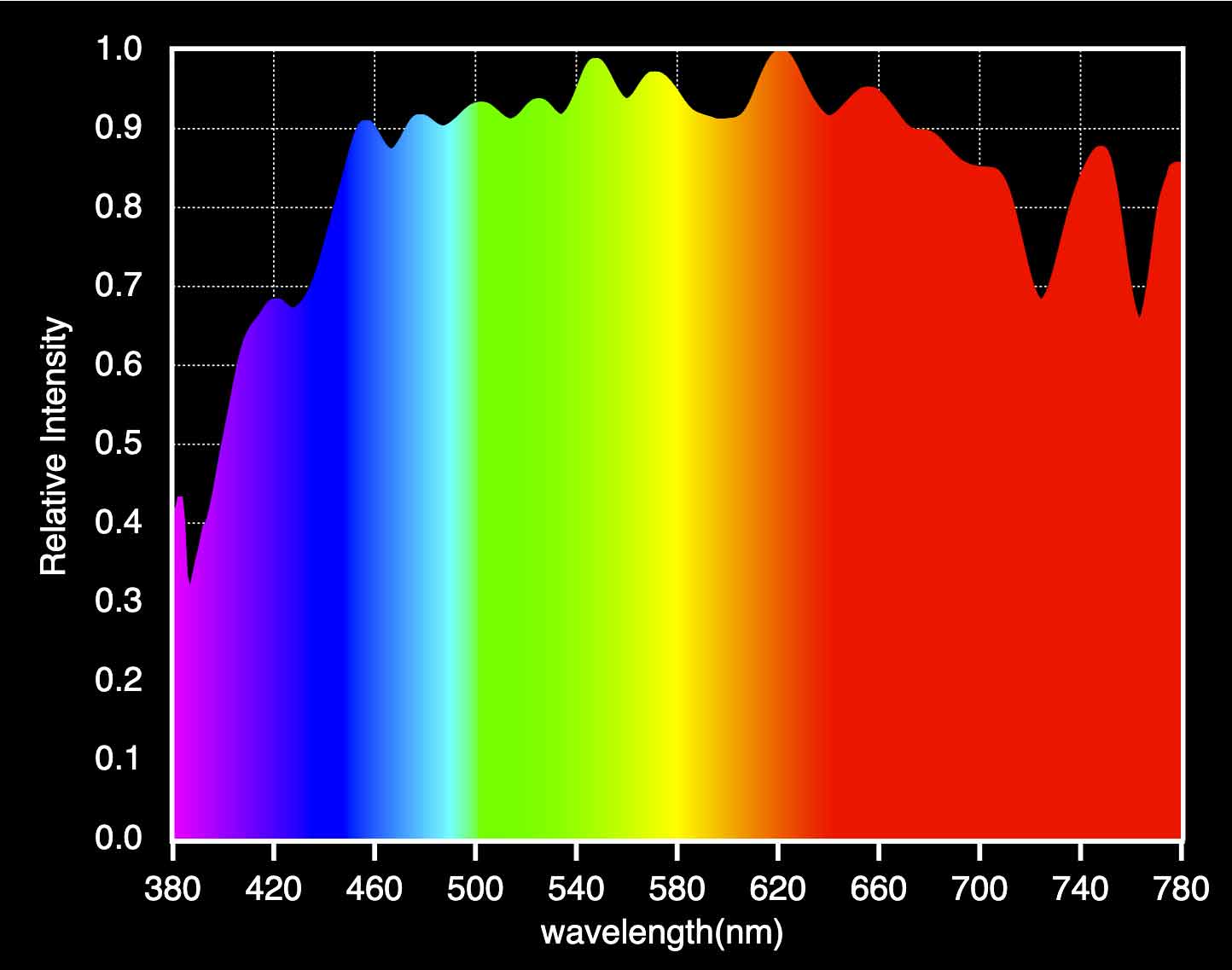
5000K - Midday
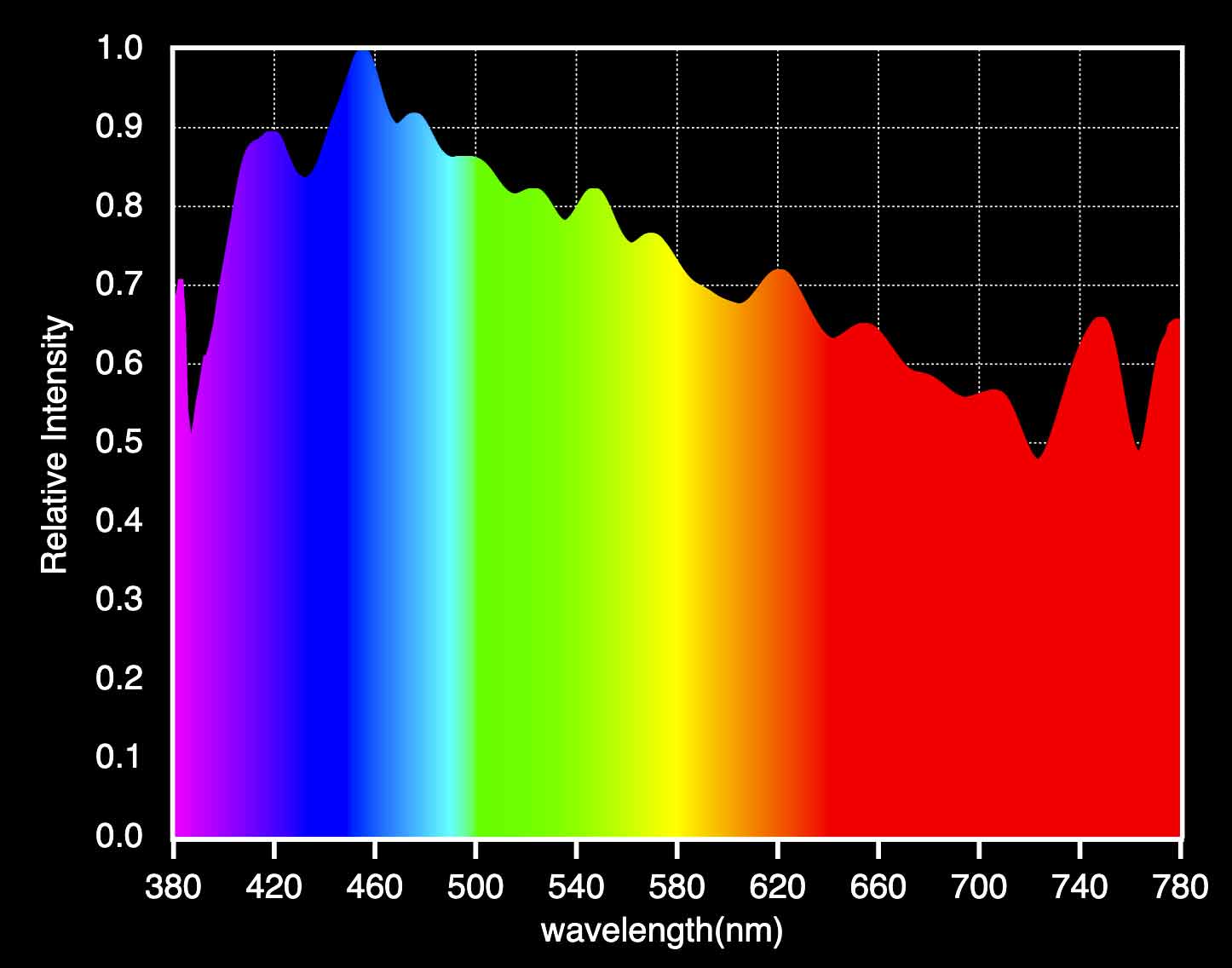
7000K - Overcast
The different colour temperatures of sunlight can be expressed using Correlated Colour Temperature (CCT) measured in Kelvin (K). A practical way to demonstrate this property is to heat up a thermal radiator, like iron, to 2427°C (equal to 2700K) and the iron will produce a warm white light. 4000K produces a neutral white light, 6000K bluish white etc. Any light from about 2000K - 10000K is considered white light since it's spectrum contains red, green & blue wavelengths of various intensities.
Light can be created using many different technologies, each with their own benefits, drawbacks and areas of application.
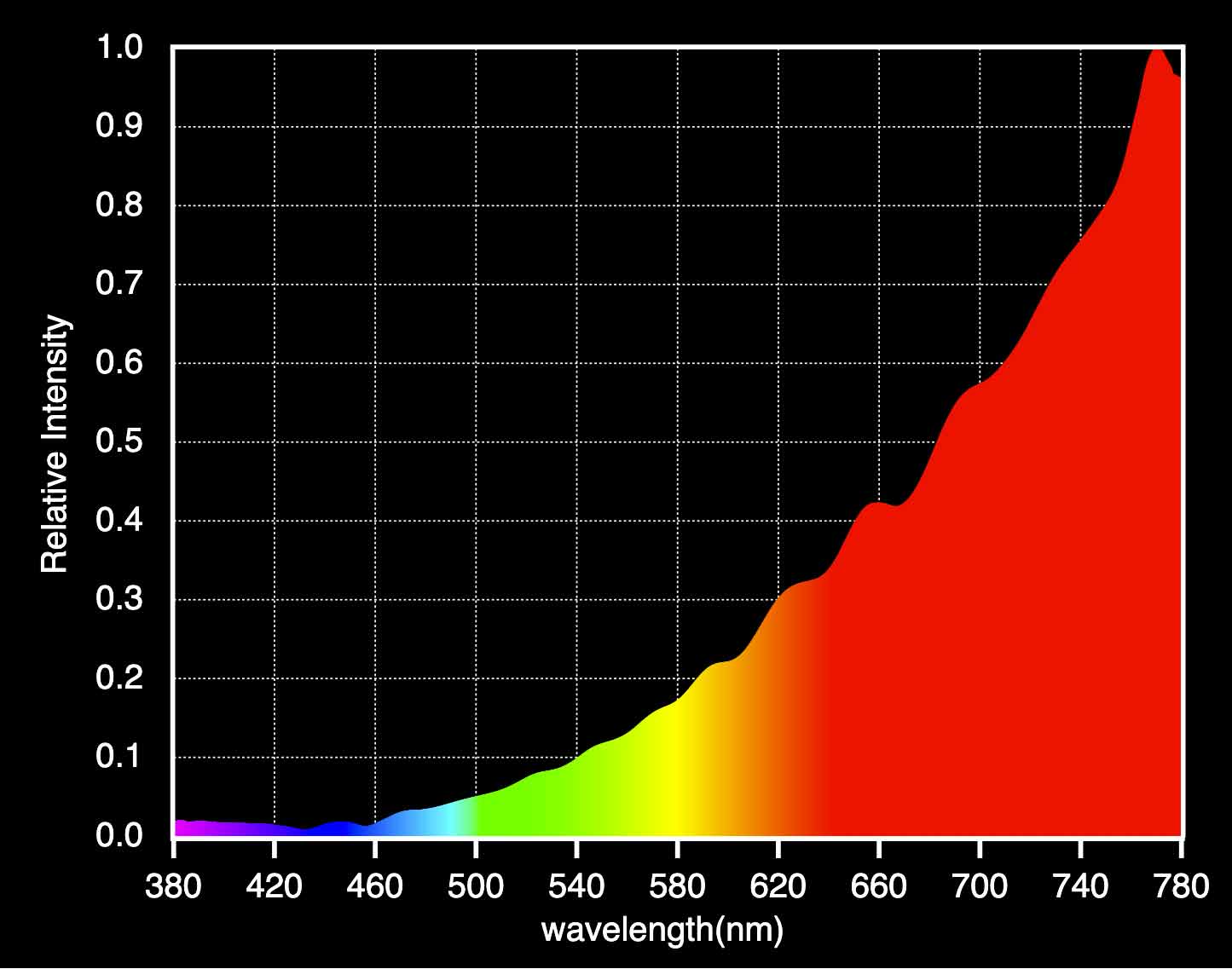
1800K - Fire
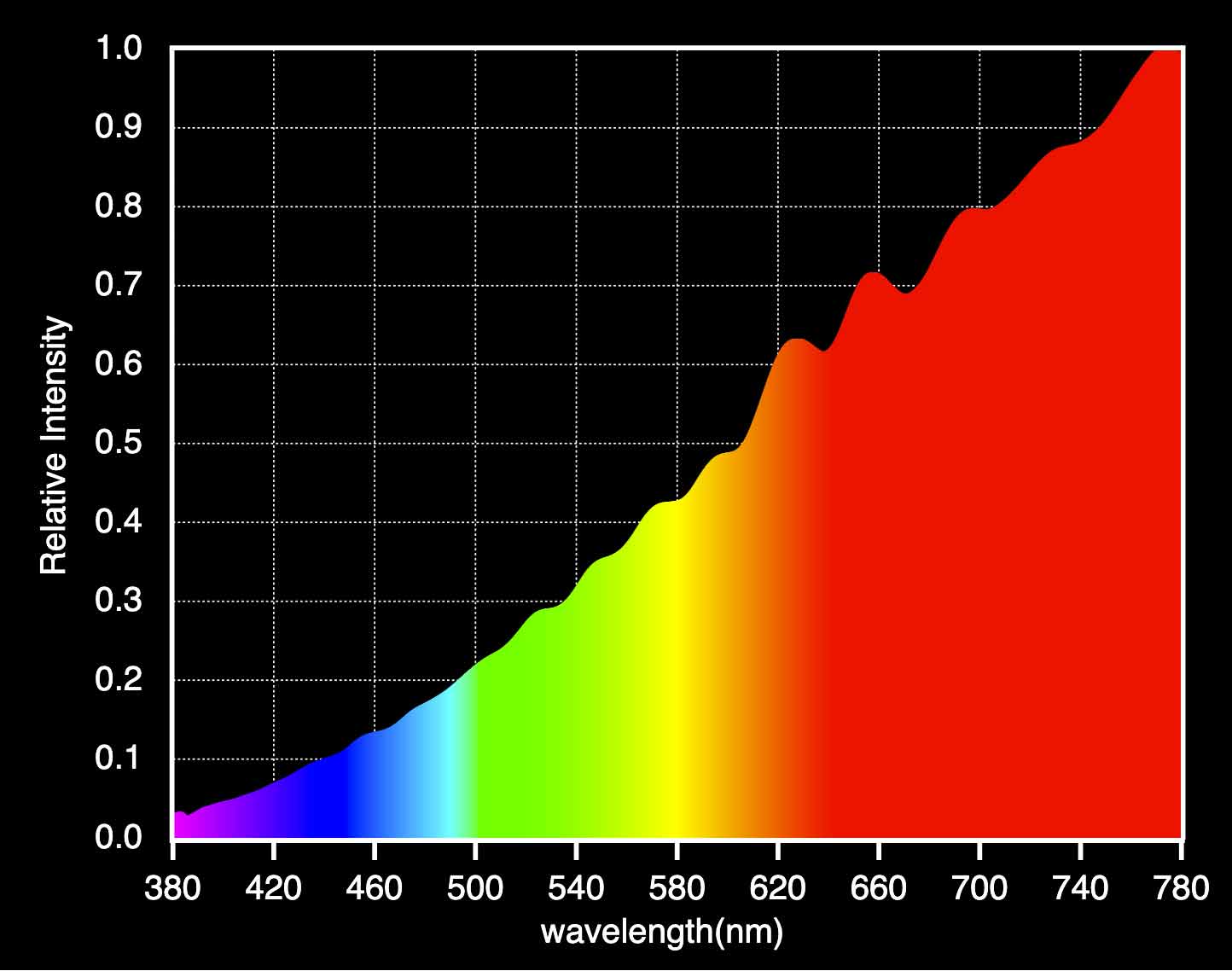
2700K - Incandescent lamp
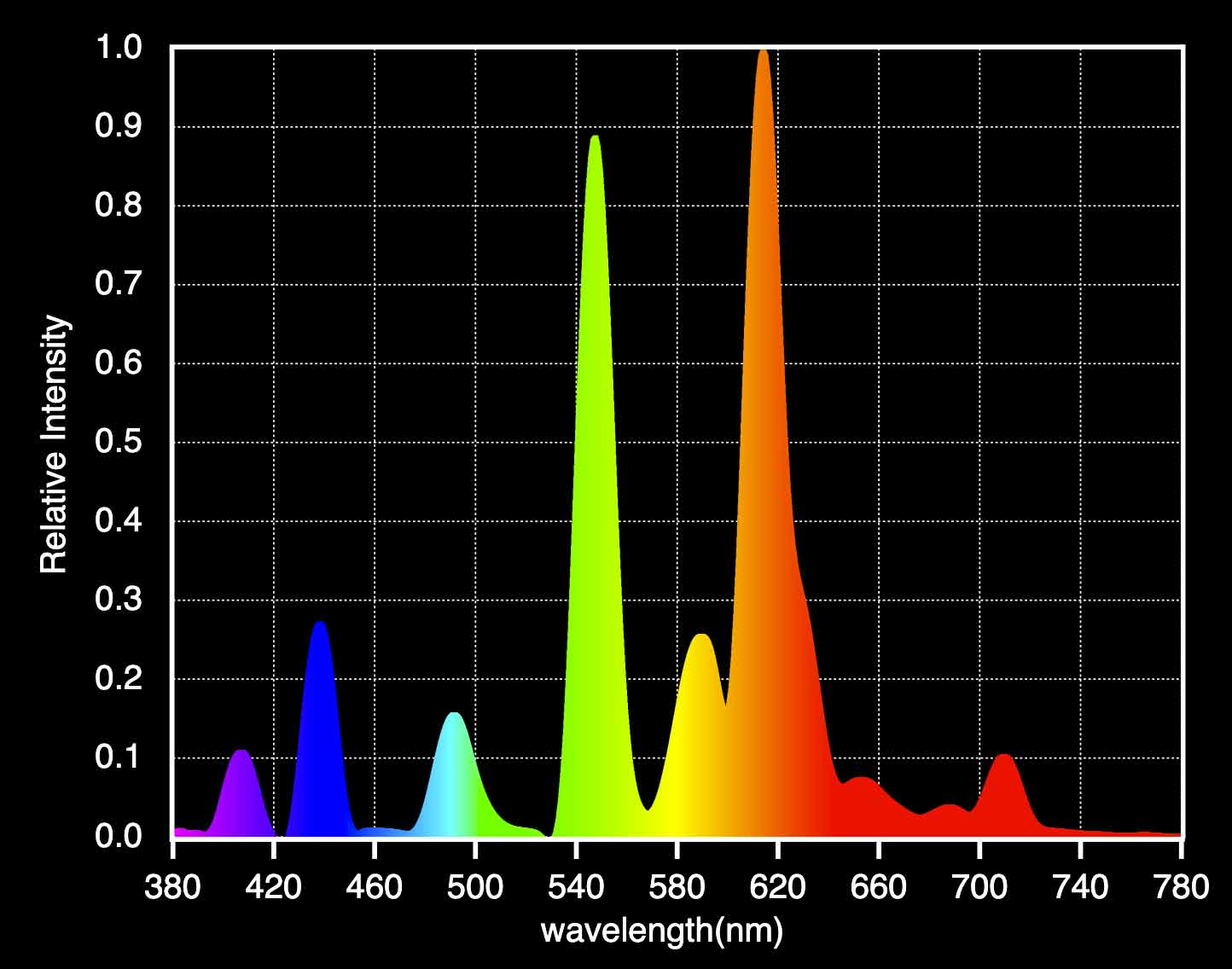
2700K - Compact Florescent Lamp (CFL)
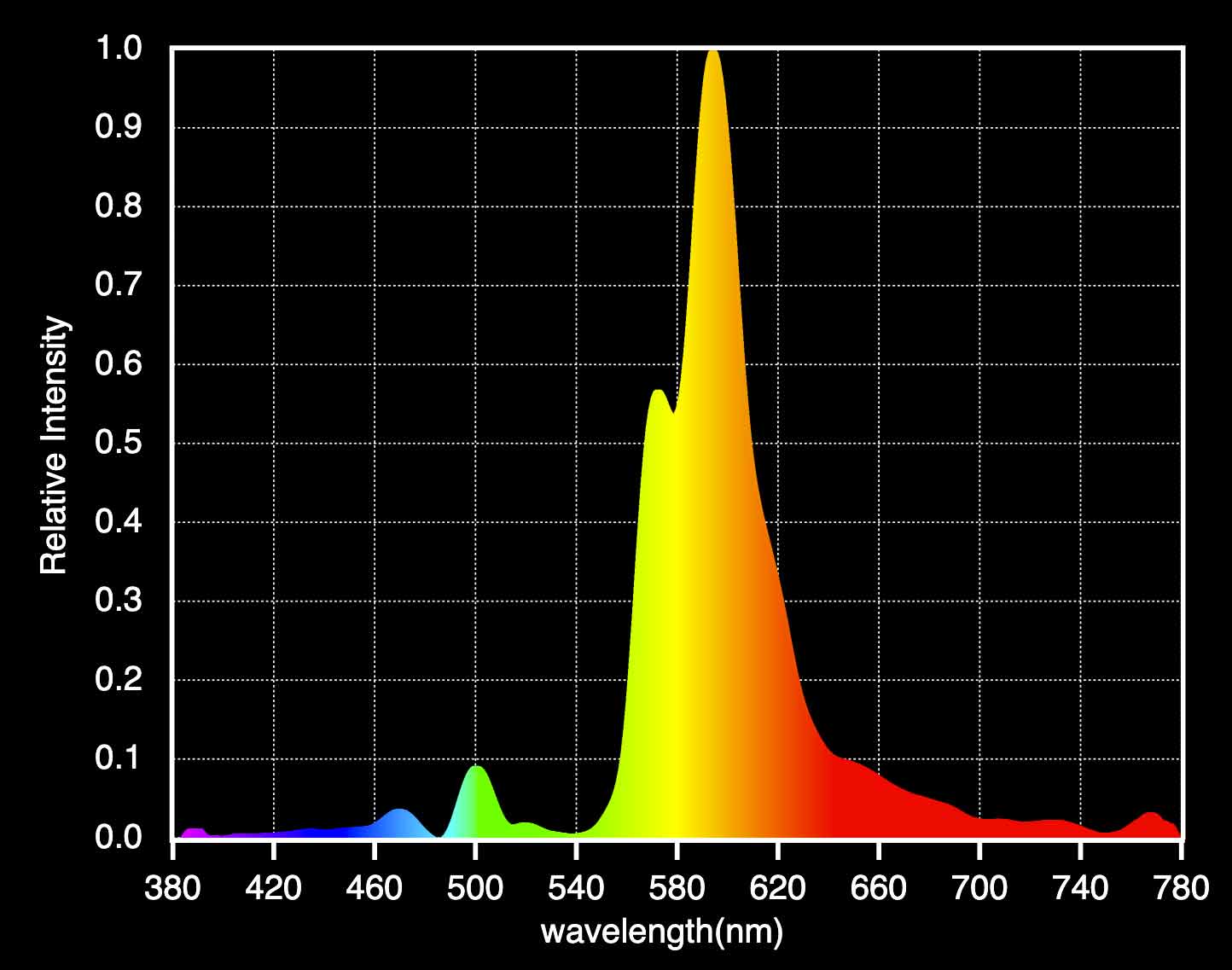
1900K - High Pressure Sodium Lamp (Orange street lighting)
LED Light Spectrum
MRACEK & Ark Licht LED light spectrums are designed to replicate the full spectral distribution of sunlight by using the latest commercially available LED technology. The spectral distribution is designed to be as linear as possible with an emphasis on a full red spectrum. Red is the hardest colour for LED's to produce but it is essential for light that looks and feels natural and comfortable.
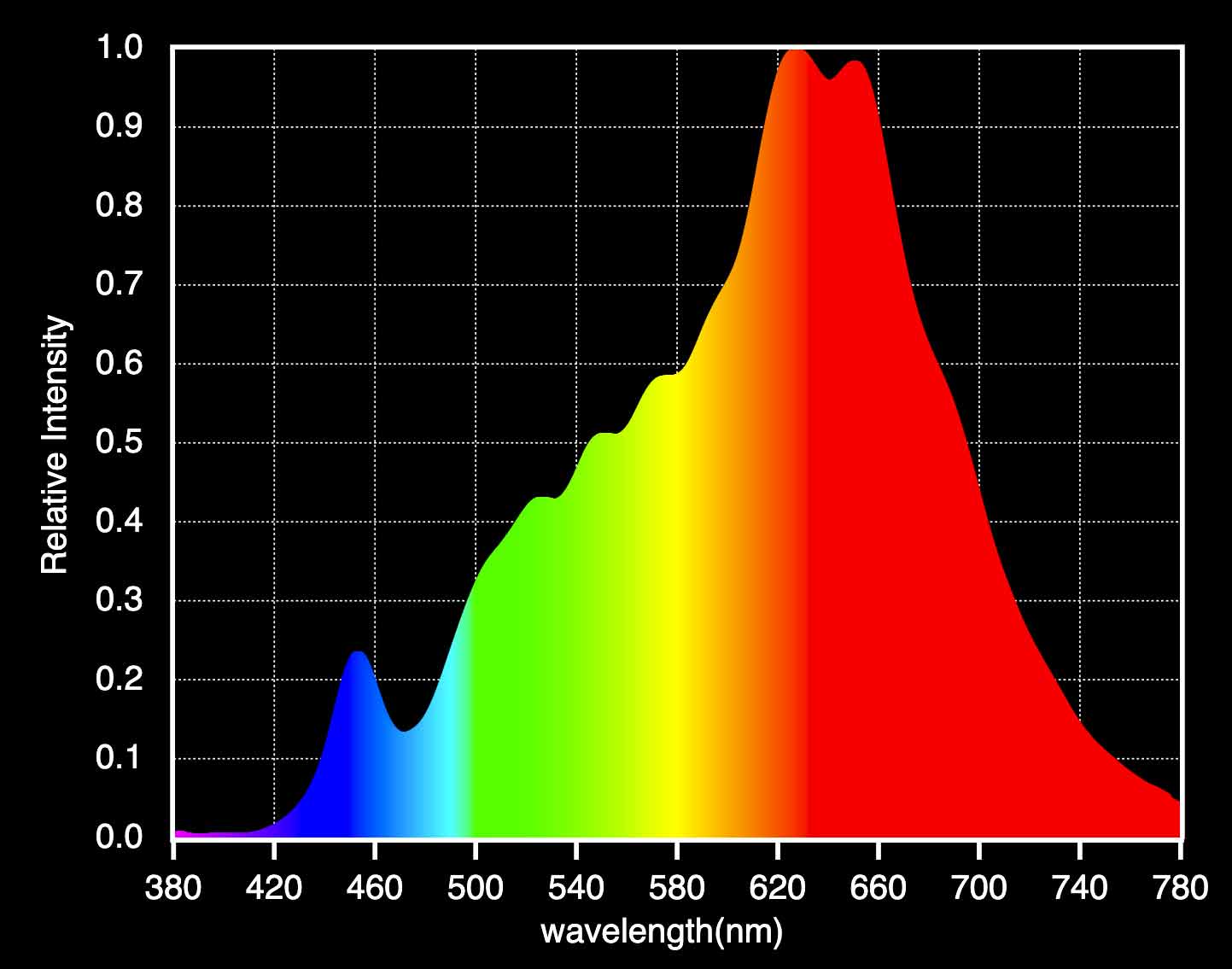
2700K - MRACEK GU10
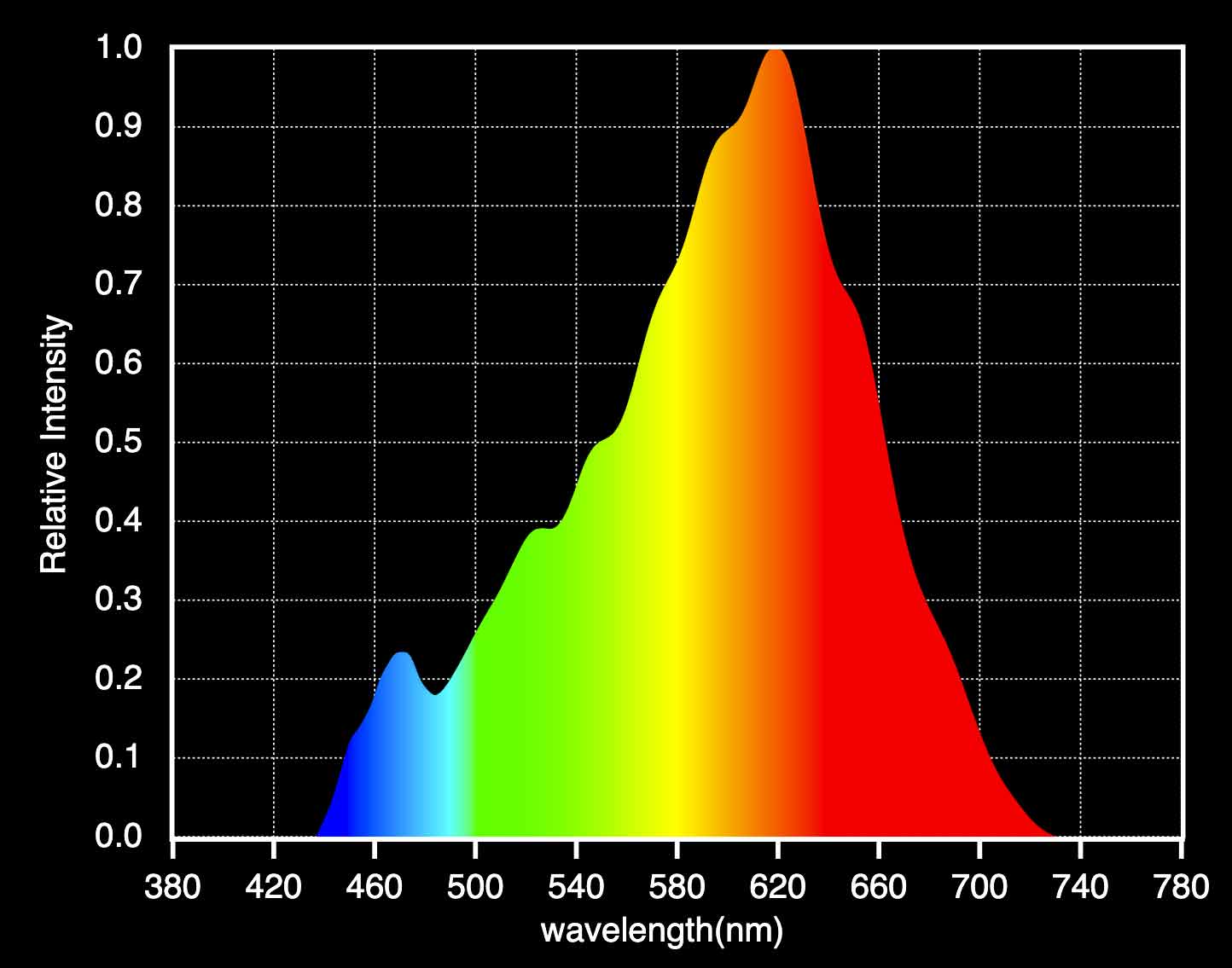
2700K - Common LED Lamp
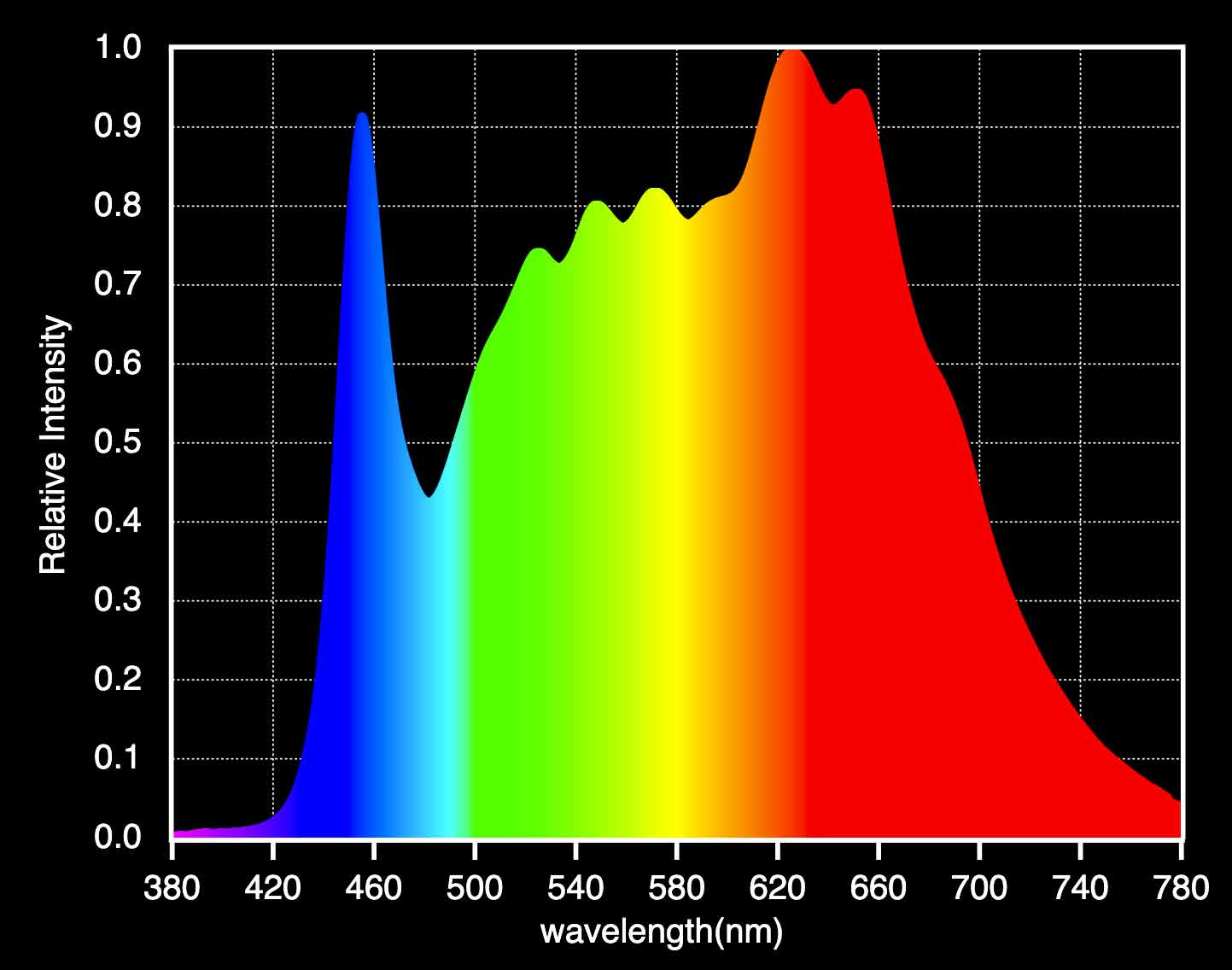
4000K - MRACEK GU10
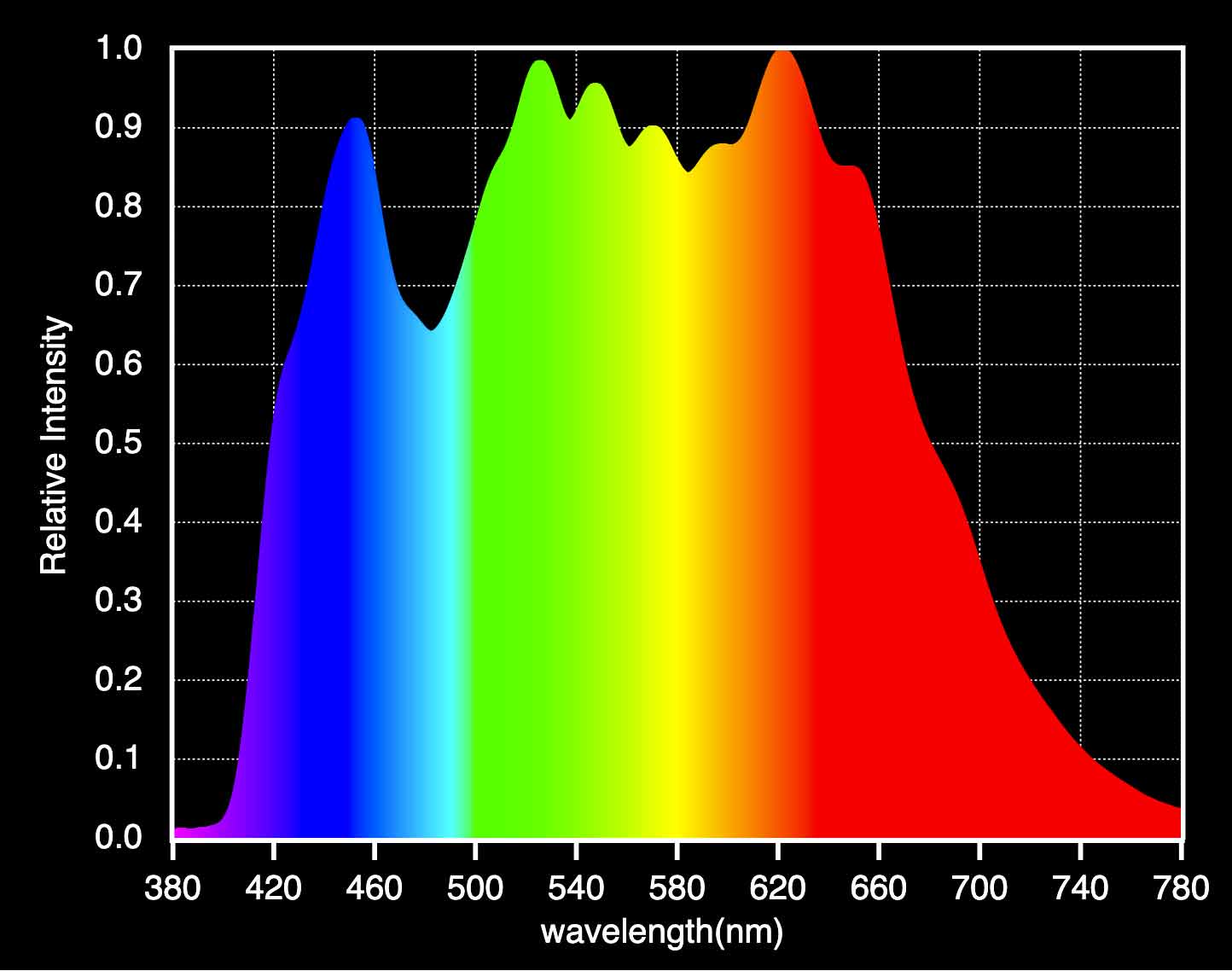
5000K - MRACEK D-Series


